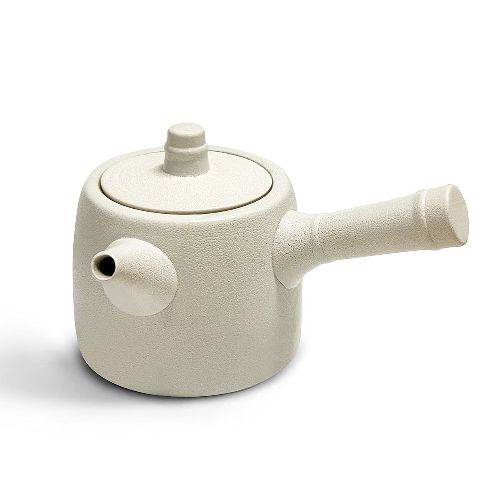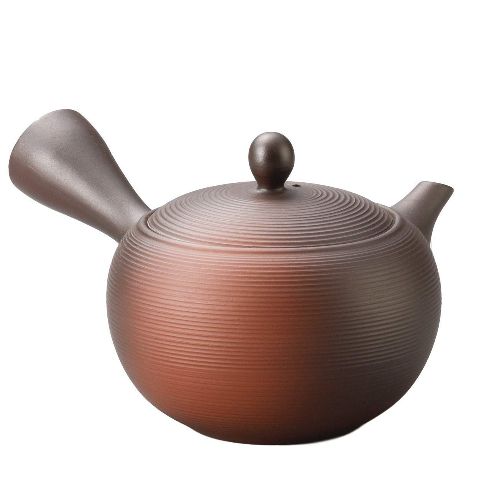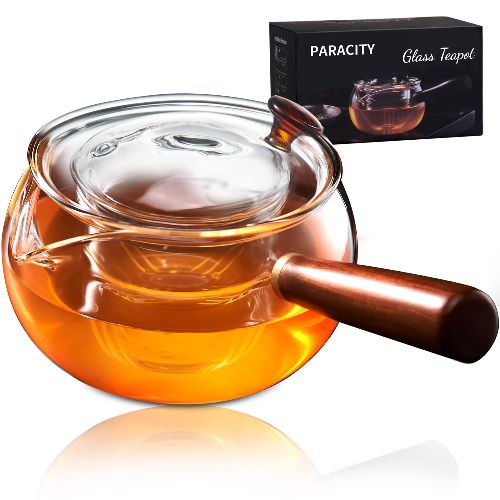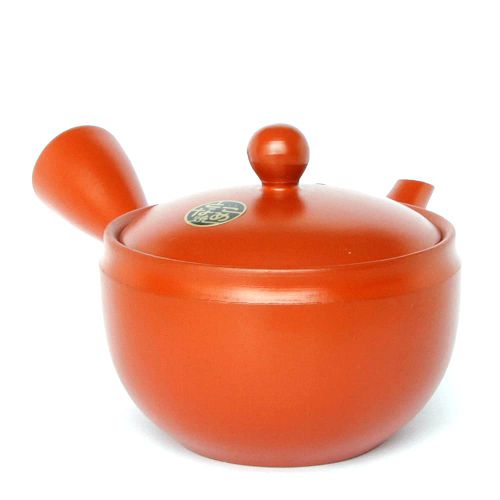Best Kyusu Teapot: Brew Tea Traditionally
From the perfect brew to a relaxing spa session, these best Kyusu Japanese Teapots are the ultimate hot beverage accessory.
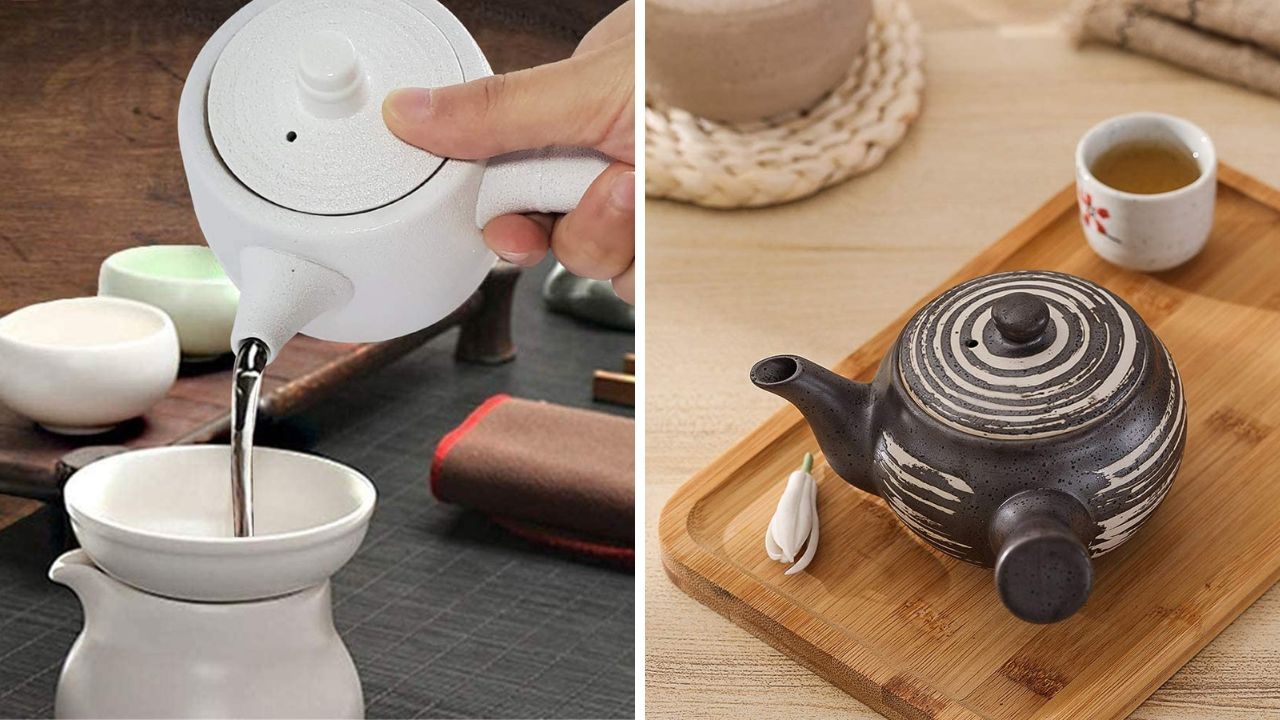
Love the taste of Japanese green tea but don't know how to make it yourself?
Kyusu teapots are specially designed for brewing Japanese green tea, and they make the process super easy. All you need is a quality Kyusu pot with all the features you need like an easy-to-pour spout or included scoop, and some high-quality Gyokuro leaves.
With a great Kyusu pot, you can brew your own delicious cups of Japanese green tea right at home. Not only does this allow you to customize the flavor exactly to your liking, but it's also a really fun and relaxing ritual that can be enjoyed every day.
Check out our guide to the best Kyusu teapots and find the perfect one for you!
How We Choose
Brewing loose leaf tea is a delicious and healthy way to enjoy your favorite beverage, but it can be difficult to find the perfect pot to make it easy and convenient.
Not all kyusu pots are created equal. Some are difficult to use or don't have filters that make brewing loose leaf tea easier.
We've done the hard work for you and found the best kyusu pots on the market. Each pot has been carefully selected based on its design, functionality, and price point.
What We Like Most
- The minimalist design will look great on any countertop or table
- Made of ceramic and can withstand heat up to 250 degrees Fahrenheit
- Comes in white for a clean, classic look
- Easy to clean with just one handle
What You Should Know
The Yan Hou Tang Chinese ceramic teapot is a classic shape that's perfect for brewing tea at home. It has a minimalist aesthetic and comes in white, so it will look great on any countertop or table.
It's easy to clean thanks to its simple one-handle design, which also makes it an ideal choice if you're new to using teapots. The ceramic construction means it can withstand heat up to 250 degrees Fahrenheit, while the matte finish makes this attractive little piece feel even more luxurious.
What We Like Most
- Beautiful, high-quality Japanese teapot
- Rounded shape and thin walls make it easy to use
- Comes with an included clay strainer
- Suitable for loose leaf tea bags or a few teaspoons of tea
What You Should Know
If you want a Japanese teapot that oozes quality and beauty, look no further than the Tokoname series. These are some of the most popular ceramic teapots in Japan, thanks to their gorgeous glazed finishes and fine attention to detail.
The Tokoname 11.8-ounce Teapot is one of the larger sizes available, so it'll suit loose leaf tea bags or even a few teaspoons for your morning brew. The rounded shape makes it easy to hold while pouring and its thin walls mean this pot won't take forever to fill up.
As with all ceramic teapots, there's an included clay strainer built into this model which helps keep tea leaves from getting into your cup when you pour yourself a tea.
What We Like Most
- The Paracity Japanese Kyusu Teapot is made from strong and heat-resistant borosilicate glass
- Features a removable filter to prevent tea leaves from being ground up
- Has a vertical spout instead of a horizontal one, so no drips fall into your cup
- Is very affordable compared to other teapots on the market
What You Should Know
The Paracity Japanese Kyusu Teapot has a very elegant and simple design, making it one of the best teapots for beginners. It's made from borosilicate glass, so is strong and heat-resistant.
It has a removable filter to make sure that your tea leaves don't get ground up too much, while still letting you easily see when the tea is ready to drink. The lid on this teapot features a great handle that makes it easy to open with just one hand, while the spout is vertical instead of horizontal so that no drips fall into your cup.
The only real downside of this particular model is that there isn't a self-cleaning filter included, which means you might need to periodically remove and clean the filter yourself if you want your tea as fresh as possible - but considering how affordable this model is overall, we think it's still worth considering in spite of this small drawback.
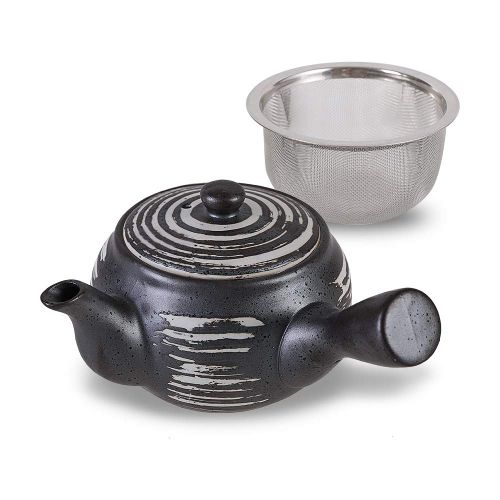
Black Teapot Kyusu Tea Maker with Infuser for Loose Tea Ceramic Japanese Kyusu Teapot
What We Like Most
- Perfect for small spaces and single-cup brewing
- Comes with an infuser for added convenience
- Brews tea from loose leaves, bags, or blends
- 350ml capacity offers 4 cups of tea
What You Should Know
The Lionwei 5.9-Inch Teapot with Infuser is a wonderful little teapot that's perfect for small spaces and uses. It has an infuser so you can brew tea from loose leaves, bags or blends easily - making it great for brewing herbal tea too.
You get 350ml of capacity in this little pot which means you can make around four cups of tea at a time, though it's not the best if you want to brew lots of different types of tea as the filter will need cleaning between each type.
As such this is more suited to one type of tea over multiple brews and we do wish it came with its own mug set - but that aside we really love the Lionwei 5.9-Inch Teapot with Infuser , especially if you have limited counter space and want something simple yet effective to use.
What We Like Most
- The perfect pot for brewing small amounts of loose leaf tea
- Rounded bottom and slightly sloped sides make it easy to hold and pour
- No glazing or decoration makes it simple and functional in design
- Side handle means it can be held with hot water without burning your fingers
What You Should Know
The Kimikura Kyusu is a simple and functional tea cup that's perfect for brewing a small amount of loose leaf tea. The 270ml capacity means it's ideal for serving two to three cups of tea, but if you're looking for something more substantial then we recommend checking out the bigger versions of this Japanese ceramic teapot.
The Kimikura Kyusu has no glazing or decoration making it simple in design with a rounded bottom and slightly sloped sides. It also has a side handle so is easy to hold even when filled with hot water. This makes it ideal for beginners looking to try their hand at pouring tea into a traditional style ceramic pot without burning their fingers as they get used to handling metal pots.
The Kimikura Aich Kyusu is our top pick for the best cheap teapot. It's super affordable, easy to use and makes fantastic tea. The red glazed body may not be as aesthetically pleasing as some other models but it fits in with its simple yet effective design.
It has a 270ml capacity which will serve two to three people comfortably at a time. It doesn't have any frills or gimmicks but does everything you need it to really well - especially when considering its low price point.
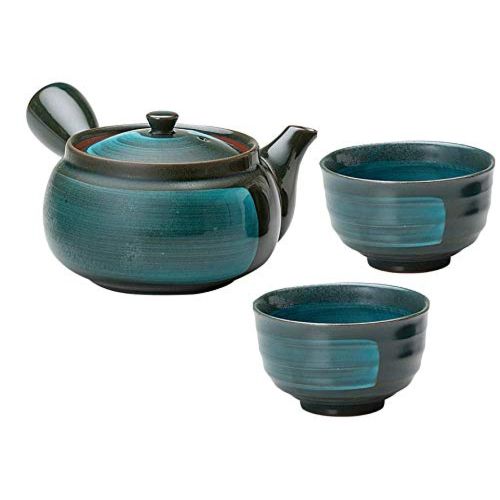
Mino Ware Japanese Kyusu Teapot Yunomi Set Emerald Line pattern on Forest Green
What We Like Most
- Made with durable earthenware
- Comes with a stainless steel filter
- 13 fluid ounce capacity
- Small size is perfect for individual servings
What You Should Know
Mino Yaki is one of the most popular types of Japanese ceramics, and for good reason. It's a very versatile item that can be used to make tea, as well as other drinks such as coffee or juice. The Mino Yaki teapot also comes with a stainless steel filter which makes it easy to pour out your drink without having to worry about making too much mess.
This item has a capacity of 13 fluid ounces and is quite small in comparison to some other ceramic teapots we reviewed. However, because the walls are made from earthenware, this means that it does have some roughness on the surface area compared to more expensive items such as porcelain. This is why you might find yourself having to use a spoon when serving your drink if there are any little bits left behind after pouring out the water.
We really like how light this item feels despite its size and think that its affordable price point makes it an excellent option for anyone who wants something simple but effective when making tea at home.
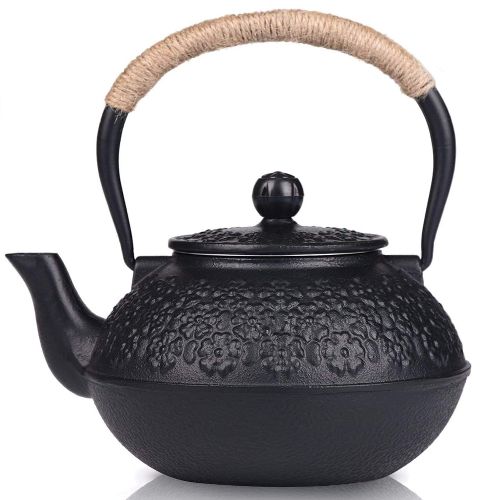
Sotya Cast Iron Teapot, 40oz/1200ml Japanese Tetsubin Teapot with Infuser for Loose Leaf and Tea Bags
What We Like Most
- The Sotya Cast Iron Teapot is a high quality, durable product that will last for many years
- It has an enameled interior which helps to keep your tea drinking water tasting fresh
- The twine wrapped handle provides a secure grip, even when your hands are wet
- The spout is angled at just the right angle to avoid dripping all over your stove top and into your teacup
What You Should Know
The Sotya Cast Iron Teapot is a quality piece of equipment that will last for many years. It's heavy and robust, meaning it can take some knocks without suffering too much damage.
The enameled interior helps to keep your tea drinking water tasting fresh, so you don't need to worry about mineral deposits forming on the inside of the pot. The twine wrapped handle provides a secure grip, even when your hands are wet. The spout is angled at just the right angle to avoid dripping all over your stove top and into your teacup.
As mentioned above, this cast iron teapot doesn't rust easily either - which is great if you're looking for a product that won't hold on to old stains or marks like a magnet.
Kyusu Teapot FAQs
There's nothing better than settling down with a hot cup of tea after a long day. Tea is one of the oldest beverages in the world and there are seemingly endless varieties to choose from.
It can be tough to figure out where to start your search for the perfect tea set, especially since there are so many options available. We've created a list of Frequently Asked Questions about teapots in order to make your decision process easier. With this information, you'll be able to confidently pick out the perfect gift for yourself or loved ones!
Why are Kyusu teapots so popular?
Kyusu teapots are a key element of the traditional Japanese tea ceremony, used for serving high quality tea in a unique, authentic way. Made from clay and decorated with intricate designs, kyusu teapots can be found for sale throughout Japan and many other countries.
Not only does using a kyusu teapot provide an aesthetic beauty to any tea-drinking occasion, but it also helps deliver the perfect flavor of the loose-leaf tea that is placed within it. The design also ensures that all of the tea is properly brewed – enabling each cup to have its own unique characteristics and depth of flavor.
Whether you’re looking to enjoy a classic boiling hot green tea or an iced matcha blend, a kyusu teapot will bring the highest quality cup of tea possible.
What's the difference between traditional kyusu and western teapots?
Traditional kyusu and western teapots are both vessels used to brew tea, although they vary in terms of aesthetic and functionality. Kyusu is a type of teapot from Japan, made from clay or porcelain and typically possessing a handle on one side rather than two. It also has an extra filter attached to the spout to help prevent the tea leaves from clogging it up. Teapots from the west, by contrast, often have two handles - one for pouring and another for lifting - as well as a built-in strainer on the inside of the pot.
Aesthetically speaking, kyusu usually feature colorful patterns or designs while westerns tend to be simpler solid-colored pieces with delicate gold or silver trim around the edges and/or lid. Additionally, traditional kyusu are generally smaller in size compared to their western counterparts which makes them ideal for single servings. However, due to their construction materials (clay or porcelain), they're not suitable for all types of tea because boiling water can cause them to crack if left too long inside it.
Ultimately, whether you choose traditional kyusu or a western comes down preference based on what kind of tea you plan on drinking, how big your servings will be (i.e., single vs multiple cups at once) and personal style preferences regarding aesthetics!
Are clay teapots any good?
Serving Japanese tea in a clay kyusu is a uniquely divine experience. Clay teapots are excellent for making tea because they absorb minerals from the water. This can give your tea more flavor, as well as a unique taste compared to using other materials like stainless steel or glass.
Clay teapots also take longer to heat up than these other materials, plus they retain heat better which is great if you plan to brew multiple cups of tea throughout the day. They’re also safe since clay doesn't contain any poisonous or cancer-causing chemicals that could leech into the beverage when heated.
Clay teapots make for an aesthetically pleasing and enjoyable experience - some people might even say it's one of life’s simple pleasures!
Is a kyusu teapot only for green tea?
No, a kyusu teapot is not only for green tea. While it is true that the classic Japanese kyusu teapot design has been used primarily for brewing green tea in Japan, this does not mean that it must be used exclusively for brewing green tea.
In fact, many other types of traditional Japanese tea like sencha and hojicha can also be brewed using a kyusu. The benefit of using a kyusu is that its enlarged spout makes pouring the water easily and accurately without any spillage or mess.
Similarly, the distinctive handle ensures easy carrying from one location to another without any risk of burning your hands from the hot water contained within. Therefore while traditionally associated with Green Tea, there is nothing technically preventing you from using your kyusu to brew other kinds of tea as well!
How do you clean a kyusu teapot?
Cleaning a kyusu teapot is relatively straightforward. Start by pouring boiling water through it twice to remove any residue that has built up in the pot, then follow these steps:
1. Fill the kyusu with warm water and add a tablespoon of baking soda.
2. Put your hand into one side of the handle and swish the mixture around for several minutes, being sure to clean every part of the interior surfaces without scratching them.
3. Rinse out all of the baking soda with hot water until it runs clear from both sides of the pot.
4. To disinfect further, fill it halfway with hot water and add 2 tablespoons white vinegar or lemon juice; let stand for 10 minutes before discarding this liquid (do not ingest).
5. Lastly, rinse thoroughly with hot water until no smell remains from either ingredient used in step 4; your kyusu should now be clean!
How to make tea with a kyusu teapot?
Making tea with a kyusu teapot is very straightforward. Here’s the basic method, which takes only a few minutes:
1. To begin, fill your kyusu teapot about three-quarters full with cold water and heat it over medium heat.
2. Put your tea bag or loose leaf tea in the infuser.
3.When the water starts to boil, turn off the heat and tightly cover the pot with its lid. Let it sit for two minutes so that all of the tea leaves are evenly steeped.
4. Open the lid and fill up cups or mugs according to how many people will be drinking (usually 1/4 cup per person). If you’re making more than one cup at once, take turns pouring evenly between them so each person receives an equal amount of flavor and strength from their mug of tea!
5. Now enjoy your hot cup of traditional Japanese tea!
What is a Japanese teapot made of?
A kyusu is a traditional Japanese teapot often used to brew green tea. Kyusu are usually made of ceramic or porcelain and come in various sizes and shapes, with some being round or rectangular and featuring intricate designs.
The handle is normally made of bamboo and the lid has a hole so that you can easily pour out your tea without having to remove it. These teapots also contain an integrated filter which helps strain the leaves from the liquid when pouring; most also have side handles for ease of gripping when pouring, as well as a raised spout for precise control over your steeping.
To ensure optimal flavor extraction from the loose-leaf tea, many kyusu feature unique curved-side walls which help maximize contact between water and leaves during brewing.
Conclusion
Looking for the perfect Kyusu teapot can be a daunting task, as there are many factors to consider.
From size and shape, material type and quality, price range and handle design—all the way down to special features like brewing method compatibility—it's essential that you do your research in order to select an ideal teapot that will not only meet but exceed all of your needs without busting out your wallet!
And of course find a source selling tea that is high quality for the best experience!


